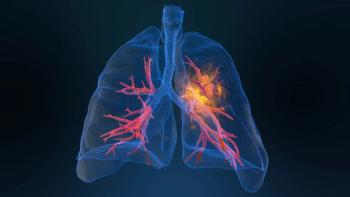
Oncology NEWS International
- Oncology NEWS International Vol 10 No 11
- Volume 10
- Issue 11
Low Arsenic Levels in Drinking Water Increase Cancer Risk
WASHINGTON-Abundant evidence links arsenic in drinking water to an increased risk of bladder and lung cancer and it is stronger than ever, according to a new report from the National Research Council (NRC), the research arm of the National Academy of Sciences.
WASHINGTONAbundant evidence links arsenic in drinking water to an increased risk of bladder and lung cancer and it is stronger than ever, according to a new report from the National Research Council (NRC), the research arm of the National Academy of Sciences.
Even very low concentrations "appear to be associated with a higher incidence of cancer," said Robert Goyer, MD, professor emeritus of pathology, University of Western Ontario.
Dr. Goyer chaired the committee that wrote the report, which was funded by the U.S. Environmental Protection Agency (EPA). The findings support a 1999 NRC report that found high cancer risks at the maximum allowable level of 50 parts per billion (ppb) of arsenic. The Clinton Administration lowered that rate to 10 ppb in January, but in March, the Bush White House put a hold on the lower limit and asked for another NRC assessment.
The new report estimated that men and women who ingest 3 ppb of arsenic daily in their drinking water have an increased risk of bladder and lung cancer of 1 in 1,000, or 0.001%. At 5 ppb, the increased risk rises to 0.0015%, and at 10 ppb, the risk is greater than 0.003%. Consumption of 20 ppb daily pushes the increased risk to nearly 0.007%.
Different Methods
The new estimates are higher than those used by EPA in setting its limit of 10 ppb because the NRC panel used several estimation methods and assumptions that differ from those applied by EPA.
The committee also noted that detecting any increased cancer that resulted from drinking arsenic-contaminated water would be statistically difficult because the excess risk is only a small percent of a person’s overall risk of bladder and lung cancer from all causes. As an example, it said an increased risk of 0.0045% for bladder cancer would represent only 13% of the total risk for male bladder cancer in the United States from all causes.
The report looked only at hazards posed by arsenic that seeps into drinking water from natural causes or is discharged into it by agricultural and industrial activities. The NRC was not asked to assess current arsenic levels in the US water supply or to make any recommendations to the EPA.
"We estimated the risk of developing cancer at various arsenic concentrations," Dr. Goyer said. "Now it is up to the federal government to determine an acceptable level to allow in drinking water supplies."
Articles in this issue
about 24 years ago
Two Large AIDS Studies Will Increase Enrollments 60%about 24 years ago
Gene Therapy Plus Radiotherapy Delays Esophageal Cancer Growth in Miceabout 24 years ago
Platinum-Based Regimens Are Favored in Advanced NSCLCabout 24 years ago
Radiofrequency Ablation Proving Effective in Small Renal Cell Tumorsabout 24 years ago
Templates Used to Document Chemotherapyabout 24 years ago
Grade Dictates Treatment of Primary NHL of the Breastabout 24 years ago
Astatine-211-Labeled MoAB Promising in Brain Cancer Patientsabout 24 years ago
GEMOX Active With Low Toxicity in Pancreatic Cancerabout 24 years ago
Legislation Urged to Revitalize the National Cancer Planabout 24 years ago
Cisplatin/Gemcitabine/Herceptin Encouraging in NSCLCNewsletter
Stay up to date on recent advances in the multidisciplinary approach to cancer.
















































































